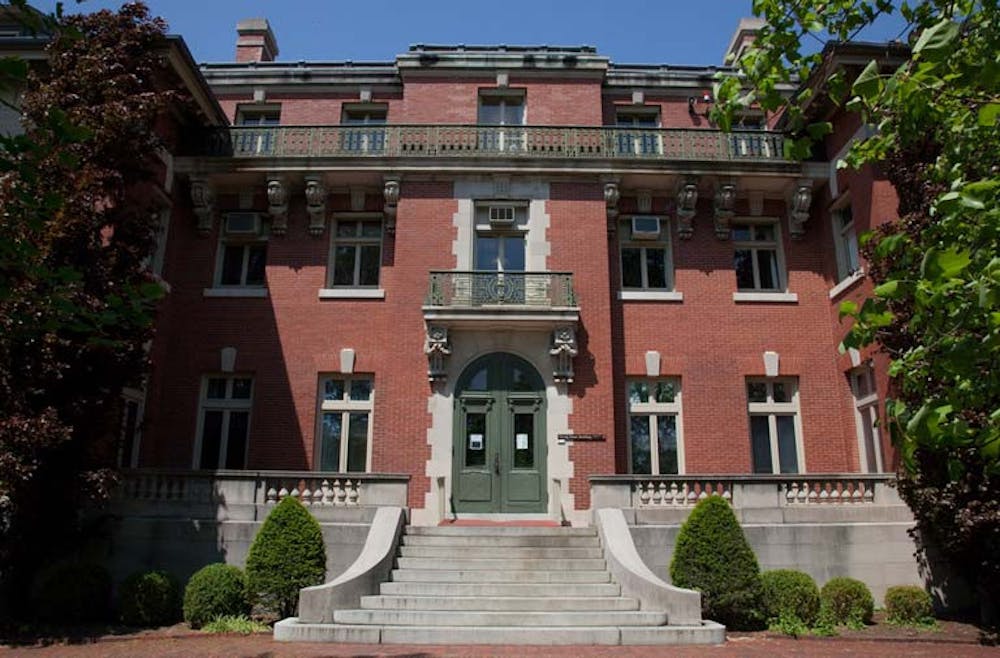The University again came out against a proposed expansion to the College Hill historic district overlay at a public hearing held remotely Wednesday, while the majority of East Side residents present on the call supported the ordinance.
The proposed ordinance would add 90 properties to the College Hill historic district overlay, three of which, including Orwig Music Building, are owned by the University, The Herald previously reported.
At least 53 percent of residents living in the proposed expanded historic district support the ordinance, according to the Providence Preservation Society, and the City Council received several letters in support of the measure from community members.
If the ordinance passes, property owners would need to receive approval from the city planning department to make any changes to the exterior of their buildings. The historic district is meant to preserve the historic character of the neighborhood.
While the University generally supports expanding the historic district, a representative of the University asked at the hearing that its three properties not be included. University spokesperson Brian Clark wrote in an email to The Herald that the current level of oversight from I-2 zoning for educational institutions is sufficient to maintain the neighborhood’s character, as any changes the University makes to its property must be approved by the City Plan Commission.
At a Jan. 27 Ordinance Committee meeting, the University attempted to delay the scheduling of Wednesday’s hearing by citing a procedural concern, The Herald previously reported. During his remarks Wednesday, Andrew Teitz, a lawyer representing the University, requested a longer period for public discussion of the ordinance, which would potentially delay a vote on expanding the historic district. Expansion of the College Hill Historic District has been in the works since 2016.
The Committee on Ordinances decided to continue public discussion on the matter in its meeting following the public hearing, leaving the proposed zoning change unresolved and unpassed.
Ward 1 City Councilman John Goncalves ’13 MA’15, a cosponsor of the ordinance, said during the hearing that the University’s past expansion into the College Hill neighborhood has “created a complicated dynamic between the institution (and) the community, as Brown has displaced families over the years” and demolished homes on the East Side.
Goncalves said this ordinance could be an opportunity for Brown to “be a good neighbor” by respecting that the majority of residents support the ordinance and allowing it to pass without further resistance.
Teitz presented on behalf of the University. “There are quite a lot of restrictions on the use Brown University can make of the property. There are 17 separate steps and requirements” the University must comply with to modify their properties, Teitz said during the hearing.
University Architect and Professor of the Practice in Architecture Craig Barton was also present and voiced opposition to the historic district overlay boundaries. Barton emphasized Teitz’s point that the institutional zoning already “provides sufficient oversight by the City Plan Commission for the regulation of institutional development.”
“Given the historic character of Providence, the need to preserve the history and beauty of the neighborhoods home to Brown facilities is an essential part of any decision-making related to our physical campus,” Clark wrote to The Herald. “We engage routinely with leaders from the city and from organizations like the Providence Preservation Society on our projects and look forward to continuing to do so in the future.”
Most residents of the East Side who spoke during the public hearing supported the ordinance to expand the historic district. Many emphasized that stricter rules about changes to properties would maintain the neighborhood’s aesthetic and historical value. Others said that expanding the historic district overlay could also increase property values on the East Side, which residents favored.
Two representatives from the PPS, Executive Director Brent Runyon and Director of Preservation Rachel Robinson, presented in favor of the ordinance. They explained that current national protections don’t enable the city planning department to prevent demolition. “Local design review is necessary,” Runyon said during the forum.
Robinson explained that 21 University properties were originally included in the overlay. She also explained that PPS has been sending letters and literature about the historic district overlay expansion to residents, after the CPC voted in favor of looking into expanding in 2016, in order to garner more support.
One attendee, Noel Joseph, raised a question about whether the expansion of the historical district would increase renting and ownership prices in the neighborhood, thus excluding people of color and low-income people. “I think we should be working on making the area more inclusive, not only to those that have the blessing of wealth or white privilege,” Joseph said.
Joseph referenced an anti-racism resolution introduced to the council July 16, which requests that the city commit to “transforming into an anti-racist institution.”
“Does the anti-racism resolution not have meaning?” he said. “I’m just trying to figure out if it was just words.”
In an email to The Herald after the meeting, Goncalves rejected Joseph’s claim about the ordinance’s potential to harm communities of color. He argued that historically, the University, not preservation efforts, has caused displacement.
“This is important and personal to me because Brown has sadly displaced members of my own family and communities of color including Fox Point Cape Verdeans, the Portuguese, Irish immigrant families, etc. for decades as a result of its expansion,” he wrote.
“It's important that we preserve the history and homes that we have left,” Goncalves added. “This (ordinance) is a critical piece of that. Otherwise, history will simply repeat itself and those currently living in the District will be vulnerable to unjust displacement, historic demolition and unbounded University expansion.”

Katy Pickens was the managing editor of newsroom and vice president of The Brown Daily Herald's 133rd Editorial Board. She previously served as a Metro section editor covering College Hill, Fox Point and the Jewelry District, housing & campus footprint and activism, all while maintaining a passion for knitting tiny hats.





